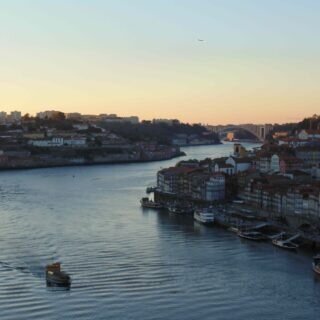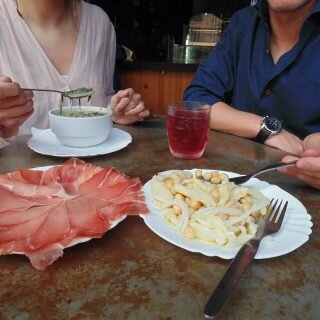So let´s continue our story… The Civil War affected Porto deeply and also its population! In this next post you will learn about the famous siege of Porto and why we became the Invicta city.

The Siege of Porto: the “Invicta”
On June of 1832 the Liberal army, led by Pedro IV, disembarks a few miles of distance from Porto. As they make their way to the city, the Absolutist army with Pedro IV’s brother, Miguel I, at its head withdraw, hoping to face a difficult foe. However the Liberal army was considerably smaller, and as soon as they get into the city, they’re easily encircled by their enemy. The Liberals would not easily give up although, so they set up a defensive line that would run all around the city. Trenches are dug for miles around the city and cannon batteries are assembled in several locations on both sides. But besides the city of Porto itself, the Liberals hold a key strategic point across the Douro: the hill of ‘Serra do Pillar’, atop of which you can contemplate one of the only round churches in the country. This offers them not just a vantage point, from which they can bombard their enemy but more importantly the partial control over the river, providing them with an open route for reinforcements and supplies to flow in through. And so the fight commences. The cannon bombardments echo all throughout the city, leaving a path of destruction in their wake, evidence of which you can still observe in the bullet and cannon holes that pave the river wall of Ribeira and on the wall, over which the former Monastery of ‘Serra do Pilar’ sits upon.

A great number of buildings lay in flames, one, for instance, is the now gone ‘Convent of S. Francisco’, whose only remainder we can see today is the actual church, just close to the Ribeira. Skirmishes occur all throughout the city and soldiers die by the hundreds. With the aid of the people of Porto, the Liberal army resists for months, cornered and outnumbered, however the worst was yet to come. As the months go by, the local population and the soldiers fighting under Pedro IV, start dealing with problems beyond the actual fights: food supplies start becoming scarce and poor sanitation and health conditions lead to widespread illness. At this point, severe famine and the pestilence start reaping more lives than the actual fights. The situation becomes dire for the defenders and a Liberal defeat is at hand, but just all hope seemed lost, a desperate plan would turn the tide of battle and the war’s. Using the only route out of the city, the river, the liberals sneak a part of the army they still had left to join a fleet, whose objective was to go behind enemy lines and take the fight to other side of the country. Seeing as the full weight of Miguel I’s army was present in the siege, after successfully navigating through the enemy’s defences, the fleet made their way to the ‘Algarve’, disembarking in ‘Monte Gordo’, they turn the region to their side with hardly any opposition to bar them. Spreading the Liberal ideas wherever they went, they manage to harness the support of the populace and no sooner than that, they are the gates of the capital of the realm. Taken by surprise, Miguel I immediately orders his troops to lift the siege and head to Lisbon with all due haste, yet to no avail, for when they arrive there, the city had already fallen to the Liberals. On August 1833, over a year later, the siege had finally come to an end. Pitted against a much larger foe, having overcome famine and pestilence, the city and its people remained undefeated, granting our city the title of Invicta Cidade do Porto (the Unbeatable City of Porto). A year later, in May 1834, the Absolutist army capitulates, Miguel I is sent into exile and, victorious, Pedro IV is proclaimed the new king of Portugal.

Pedro IV of Portugal, the Soldier King
Sadly the new king’s reign would be short-lived, for in September 1834 he would pass away with tuberculosis, being succeeded by his own daughter, Maria II of Portugal. Yet his last act as a king would be to legate his heart to the city and people of Porto, as a gesture of true appreciation for the enormous sacrifice they endured during the siege and without which, the Liberal army would have never achieved victory. The heart’s final resting place would be a place Pedro IV himself would often attend to during the siege: the Church of Lapa, where it has remained up to our days. During the long siege of Porto, he helped his troops assembling cannon batteries and digging trenches, he tended to the wounded, ate even amongst those of the lowest rank and he would even fight alongside his own troops. For this, he would forge a legacy as a fearsome, selfless king, thus granting him the title of o Rei Soldado, ‘the Soldier King’.
We are sure that these posts made you see Porto with different eyes! We have lots of stories to share and we promise you will fall even more with this amazing place… Join us on a tour and you will never want to leave ;)



